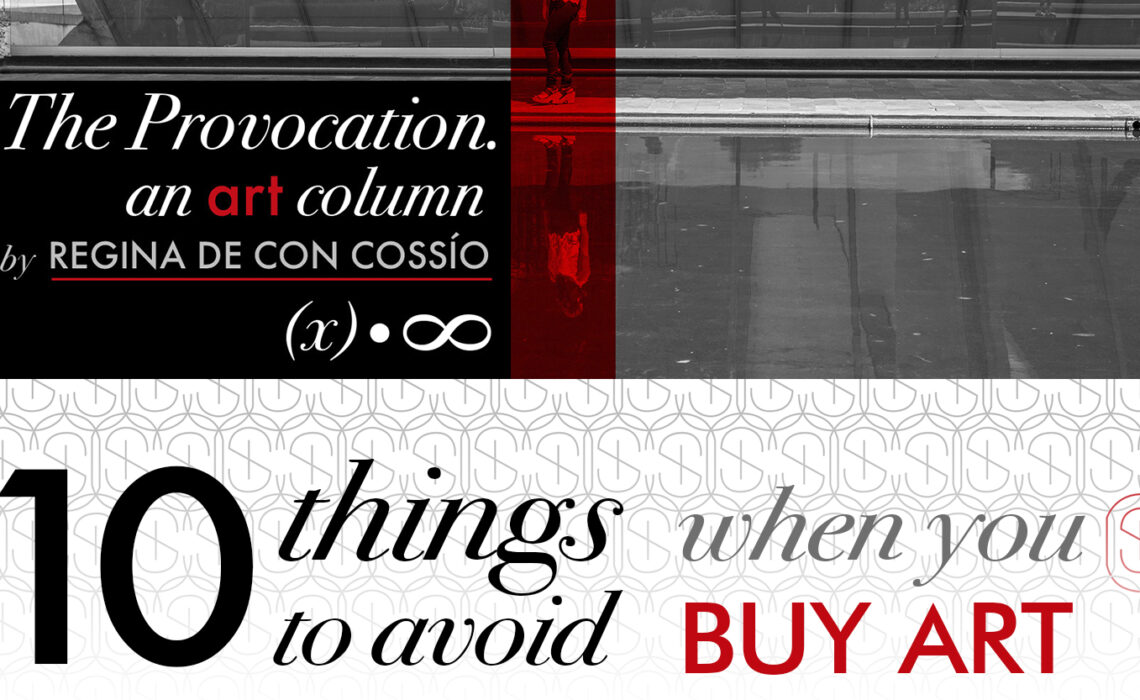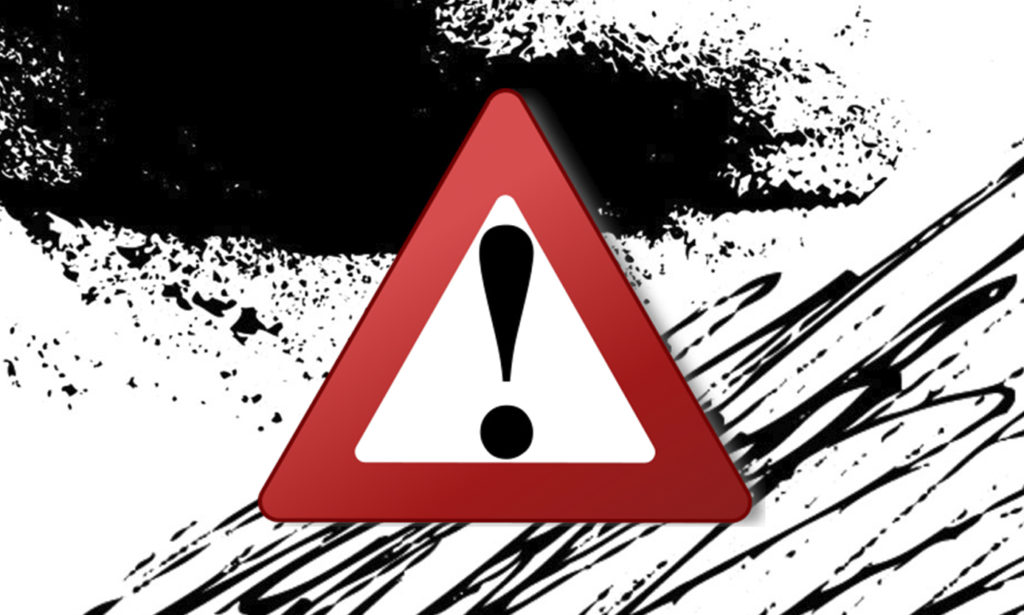
10 Things to Avoid When Buying Art
Photo Courtesy of Sybaris Collection
When buying art, whether it be your first (or your fiftieth) piece, there are some general rules to remember and some things you really should avoid. This may seem elementary to some and enlightening to others. However, it is always helpful to remind yourself of these tips before you buy on impulse. As you build your art collection and expand your network within the art world, many of these suggestions will become second nature. But for those new to at collecting or happy to be reminded, let’s look at some of the top things one should AVOID when buying art:
1. Not Being Educated About Art
Before you rush to the auction, fair, or gallery, be sure you have researched before bringing home art. Consider this your homework: know something about what you are looking at when you arrive.
- Find every conceivable way to learn—visiting museums, galleries, and reading the myriad of art books found in libraries, researching artists, their works, and the venues you will be visiting;
- The internet provides art enthusiasts with a glimpse of art found in leading museums you may not be able to visit in person, and online art communities offer the chance to participate in online discussions about many art topics;
- Follow your eyes and close your ears to most of the chatter going on around you but do ask questions. Be a sponge, soaking up valuable insight which help you become a better collector;
- Look for trusted advisors: industry experts, experienced collectors, art curators, and even professional art advisors;
- Remember, you are growing as an art appreciator and collector, so you cannot expect to be an expert immediately!
Photo Courtesy of Sybaris Collection
2. Rushing to Purchase a Piece
Hesitate before buying the first few pieces you see. Like a kid in a candy store, sometimes the options can be overwhelming. Step back, take a deep breath, and think about what you want.
- Understand the different venues for purchasing and the caveats and advantages to each, including galleries, online auctions and sales, private sellers, live auctions, personal shoppers and curators;
- Don’t be impulsive until you are confident. The last thing you want to experience is overwhelming buyer’s remorse; if you are not sure, don’t buy it at the first opportunity;
- Make sure you understand quality work. Just because you like a piece doesn’t make it fine art and worthy of a hefty price tag;
- Until you are confident of your ability to make a quick judgment call, avoid auctions or fairs where you may be pressured to buy on the spot.
3. Ignoring What You Truly Like
No matter what the experts around you (or the current art market) say about a piece, if you don’t like and truly do not know where you will place it, don’t be pressured to purchase it.
- Don’t buy a work of art just for the investment—the art market is fickle and if the piece doesn’t increase in value, will you still enjoy it?
- Consider where you will use/display it, including the medium, size, subject, and the feelings it may invoke in viewers;
- Understand what you are drawn to, and what may bother you which you might be tempted to overlook when first viewing a piece.
4. Misunderstanding How Art is Valued
Unlike other types of investment, the art market is a bit…unpredictable. Although it is nearly impossible for the average collector to become a true market guru, one can focus on those dependable facets of art valuation to avoid making a costly mistake.
- There is no specific guide to valuing art—many factors are involved;
- Market is always changing; it is difficult to keep up without training. Staying involved in art community discussions will help collectors understand trends;
- Some attributes are important: ownership history, provenance, and other works by the artist;
- Who is the artist, how many pieces were created, is it an original, and when was it created? This is where doing your homework really pays off!
5. Not Setting a Budget…and Sticking to It
Be realistic while looking for art works to begin, or add to, your collection. Knowing what the purpose, location, and price you have in mind before shopping will save you stress and an empty bank account!
- Don’t be pressured to buy something you cannot afford. Ask for smaller works by the same artist, or similar pieces;
- Look for new artists whose works are still affordable. Sybaris is dedicated to promoting emerging artists and those from underpromoted areas, allowing collectors to purchase new pieces which represent unique cultural areas;
- If a valuable piece is priced strangely low, consider its condition (how much restoration will it need, anything else it needs for display—framing, support, stand);
- Don’t forget to consider the expenses involved in getting your work home (shipping, insurance).
6. Ignoring the Less Exciting Parts of Fine Art Ownership
Once you have made your purchase, you need to protect your investment. There are responsibilities which come with owning an art collection.
- Shipping—who handles the delivery of your artwork and what is the cost;
- Insurance—there are several types of insurance, and it is important NOT to assume your homeowner’s policy covers your fine art;
- Appraisals; Sybaris offers an Art Tendency Report to our members to help them monitor the valuation of their collection;
- Security for your piece while on display, on loan, or in storage;
- Collection maintenance—to maintain your collection for tax and estate planning purposes, you may want to invest in some management software.
Photo Courtesy of Sybaris Collection
7. Not Considering Digital Art or New Forms of Art
These may be the ideal first choice for your tastes, budget, and display location.
- Digital photography
- Digital sculptures
- Digital paintings
8. Neglecting Maintenance of Your Art
Fine art is an asset which needs to be maintained, and in some instances, restored. Understanding what is involved in maintaining your investment will provide confidence in your purchase and allow you to enjoy the works more.
- There are recommended display methods, including lighting, humidity, and temperature;
- Conservation and restoration needs;
- Preparing your art for natural disasters or moving.
9. Not Considering the Financial Planning with an Art Investment
As with any other investment, your financial advisor or attorney may have suggestions to help you maximize the use and value of your works of art.
- Planning for appraisals and insurance renewals;
- Estate planning;
- Loaning art to museums and other displays.
Not Understanding How to Sell Art
Although when you first purchase a work of art, you might not even consider that one day you will want to sell the item, whether due to an increase in value, change in taste, or for financial reasons. One of the most important thins to remember when purchasing art is that it generally lasts longer than your lifetime, so planning for the future is important.
- Understand what venues you could sell your art works in;
- Obtain financial and art advice to make the most appropriate choice based on economic and market factors.
10. Be Prepared. Be Inspired.
There is no reason to fear buying fine art; with these tips, both new and experienced collectors can discover, purchase, and own works of art confidently with the information and support found within the art community. At Sybaris Collection, we strive to provide collectors with a glimpse of unique and inspiring artwork discovered around the world, by both emerging and established artists. Let us help you cultivate your taste and find treasures that speak to you, no matter your style, genre or medium. When looking for an exclusive selection, we offer private ARTclub membership for those with distinguishing taste.




